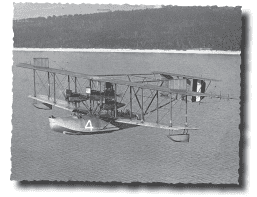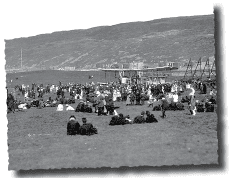
Meet Some Pioneering Pilots of Transatlantic Flight
Just after World War I, most people thought it foolish to fly across the Atlantic Ocean. The weather was treacherous, and you could only navigate if you could see the sun, moon, and stars. It was impossible. Still, the newspapers offered cash prizes, governments offered glory, and a lot of people would try.
The First Across the Atlantic
 On 16 May 1919, three flying boats took off from Newfoundland and flew into the Atlantic night. Sixty-eight destroyers illuminated the way with searchlights at 50-mile intervals along the entire route, acting as stepping stones. With fog, heavy rain, and high winds, all three craft got lost within minutes of takeoff. Two landed mid-ocean and quickly broke up in the ocean swell.
On 16 May 1919, three flying boats took off from Newfoundland and flew into the Atlantic night. Sixty-eight destroyers illuminated the way with searchlights at 50-mile intervals along the entire route, acting as stepping stones. With fog, heavy rain, and high winds, all three craft got lost within minutes of takeoff. Two landed mid-ocean and quickly broke up in the ocean swell.
The remaining aircraft, the NC4, followed all the ship stations to land at the Azores and later continued its flight to Lisbon. The Atlantic had been flown in 53 hours and 58 minutes spread over 23 days.
Alcock and Brown
 On 5 June 1919, John Alcock and Authur Whiten Brown landed near Clifden, County Galway. They had become the first men to fly across the Atlantic Ocean in one hop. A crowd had gathered in Newfoundland the day before, expecting to see them kill themselves. Alcock flew on through the Atlantic mid-summer weather—fog, wind, hail, rain, and snow—and just managed to pull out of a wild spin that left them pointing back to Newfoundland, and they made it!
On 5 June 1919, John Alcock and Authur Whiten Brown landed near Clifden, County Galway. They had become the first men to fly across the Atlantic Ocean in one hop. A crowd had gathered in Newfoundland the day before, expecting to see them kill themselves. Alcock flew on through the Atlantic mid-summer weather—fog, wind, hail, rain, and snow—and just managed to pull out of a wild spin that left them pointing back to Newfoundland, and they made it!
Princess Lowenstein-Wertheim
At 60, she was determined to be the first woman to fly across the Atlantic—and to do it the hard way: from east to west, against westerly winds. On 31 August 1927, she and two experienced British airmen took off from England. Halfway across, their lights were spotted in the night sky by an oil tanker and—like many of the early flights—they were never seen again.
James Fitzmaurice, First Irishman to Fly the Atlantic
The first Irishman to cross the ocean, James Fitzmaurice, went with two Germans. They set off from Dublin on 12 April 1928, intending to fly to New York. On the morning of 13 April, they ran into Newfoundland fog banks and lost track of where they were. Worried about fuel, they suddenly saw a light. They circled and identified it as a lighthouse on a snow-covered island. Attempting a hazardous landing, the undercarriage collapsed, but everyone survived. This was the first successful east-west crossing against the prevailing winds. It took 36.5 hours.
Charles Lindbergh
 Flying The Spirit of St. Louis, Lindbergh took no chances. He waited for the perfect weather forecast and a full moon; he had a good aircraft and his instruments were far superior to those of earlier pilots. However, he had no radio or navigator. He landed in Paris on 21 May 1927. “I saw the green hills of Ireland and I knew that I had hit Europe on the nose. Ireland is one of the four corners of the world.”
Flying The Spirit of St. Louis, Lindbergh took no chances. He waited for the perfect weather forecast and a full moon; he had a good aircraft and his instruments were far superior to those of earlier pilots. However, he had no radio or navigator. He landed in Paris on 21 May 1927. “I saw the green hills of Ireland and I knew that I had hit Europe on the nose. Ireland is one of the four corners of the world.”
More Information
Click through to learn more about some of the key flying boat airlines, a few major types of flying boats, and some of the VIPs who rode as passengers










